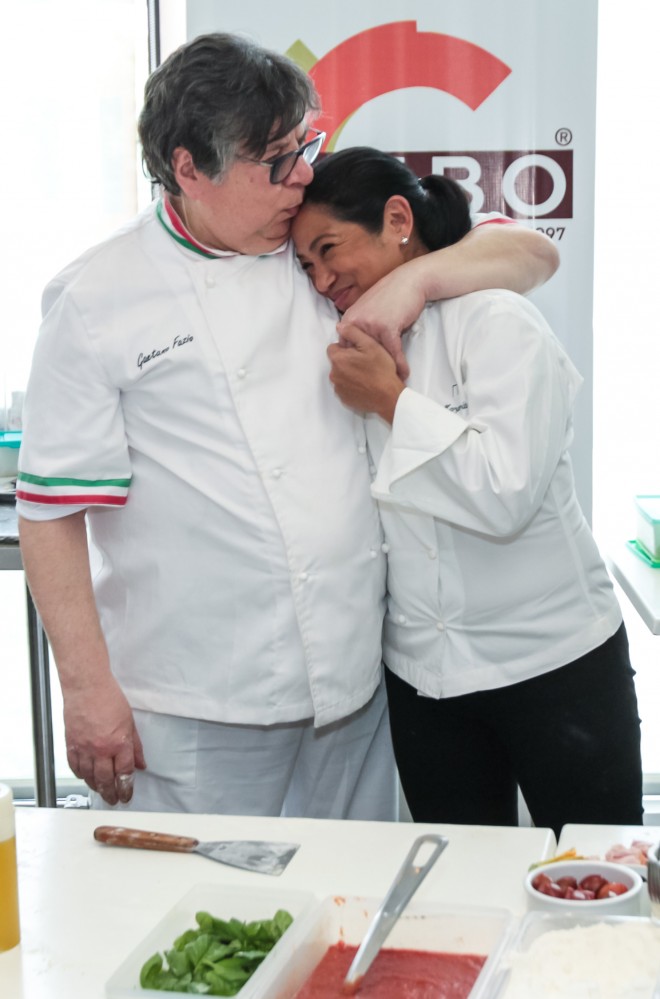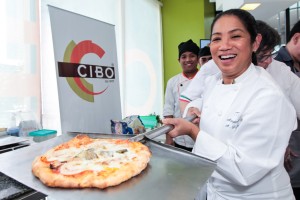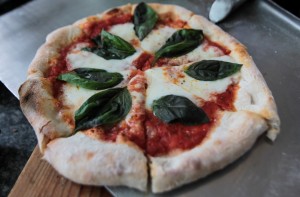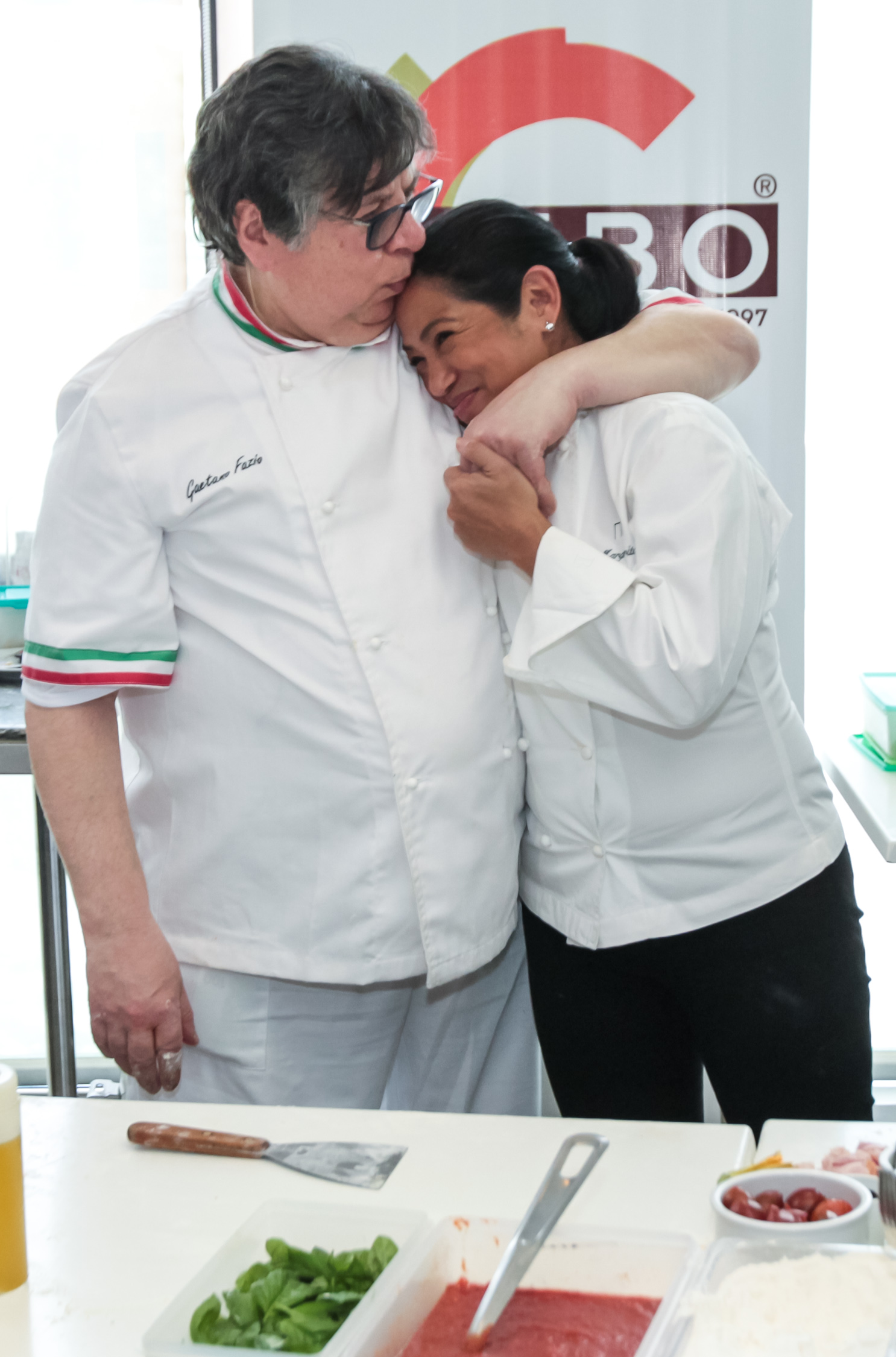
No one could be more excited about showing how real pizza is made than Margarita Forés.
Though her restaurant, Cibo, has been making the Italian staple for the past 20 years, Forés said it’s still difficult to source flour, its primary ingredient.
For her it has to be Caputo, the flour brand used in Naples where Italian pizza was first made.
But for a long time, Caputo wasn’t available in the Philippines. Government regulations about the composition of the flour— like infusing it with Vitamin A—did not allow outright importation.
The brothers Alex and Clifford Lichaytoo, who bring in Italian food products to the country, had to ask Caputo to reformulate its pizza flour, and this took two years.
And then Forés met Gaetano Fazio, a maestro pizzaiolo (pizza-maker). She traveled with her team to Ischia, an island off Naples, where Fazio runs his Ristorante Pizzeria.
For a week the group learned how to do “La Vera Pizza Napoletana” (authentic Naples pizza), the proper way to turn the mound of dough into a rounded shape and how to make the sauces.
Not everyone is fortunate to travel that far just to take pizza lessons under maestro Fazio.

Pizza history
But like the good teacher that he is, Fazio himself shared with us a bit of culinary history. No one knows, he said, where pizza really came from, but it might have been Asia where flat breads are still being done.
The early form was focaccia with a bit of cheese, then toppings were placed, principally tomato which used to have a golden color. Even after the fruit mutated into red, it’s still called pomodoro (golden apple) in Italy.
Fazio said Caputo is an ancient mill that makes flour in both traditional and modern methods. The company also makes other kinds of flour, such as those for bread.
Alex Lichaytoo pointed out that pizzas made in the Philippines generally use all-purpose flour that tends to make the crust heavy like bread.
Every country has a different recipe for dough, said Fazio, because of the climate (temperature and humidity) and the water. He arrived early enough in the country to formulate the recipe for Cibo, with the air-conditioned temperature factored in: 1 liter water; 50 grams sea salt, 1.8 kilograms Caputo flour; 4 g yeast.
He used Caputo yeast (Criscito) that has a certain aroma. The yeast was dissolved in tepid water, like the sea salt, but separate from the yeast. Yeast and salt shouldn’t be mixed when dissolving because yeast is a living thing and salt will kill it.

Boxing analogy
The maestro used boxing as an analogy to demonstrate the do’s and don’ts of dough-making. Flour is the referee when everything comes together in the mixer.
One can tell when the dough is ready—when the sides of the mixer no longer have flour and the mixture is smooth. The dough should rest for about three hours. There was rested dough for Fazio to use, and for volunteers to create their own toppings from fresh and canned ingredients.
Fazio made the classics: margherita, marinara and D.O.C. or Denominazione di Origine Controllata, a label that assures the quality of the product and its origin. The buffalo mozzarella, said to be the best quality from Fazio’s Naples, is the main topping.
An important point from the maestro: For the margherita, the mozzarella should be added midway through the cooking so it doesn’t dry up.
The dough was apportioned, each patted, stretched and turned over but gently to have a rounded shape. Just shape it with the hands, Fazio said, never with a rolling pin. When the sauce is placed, leave space at the sides so the toppings don’t spill out.
Asked if pizza should be tossed, Fazio said the dough used for that procedure has no yeast. Though he didn’t actually mention it, tossing pizza isn’t traditional, at least not La Vera Pizza Napoletana.
Forés said Fazio regrets that Cibo doesn’t use a brick wood-burning oven, although she promised they will have one soon.
Cibo uses a gas oven, which Fazio used for the demonstration. He said that the temperature should be 500°C on top and 300°C to 400°C at the bottom. He turned the dough every now and then to make sure all sides were cooked evenly.
It took only a few minutes for each pizza to be ready. The crust was thin, crunchy and light on the tummy. Strings of mozzarella were a sign of both the quality of the ingredient and the right cooking.
E-mail: [email protected]









































